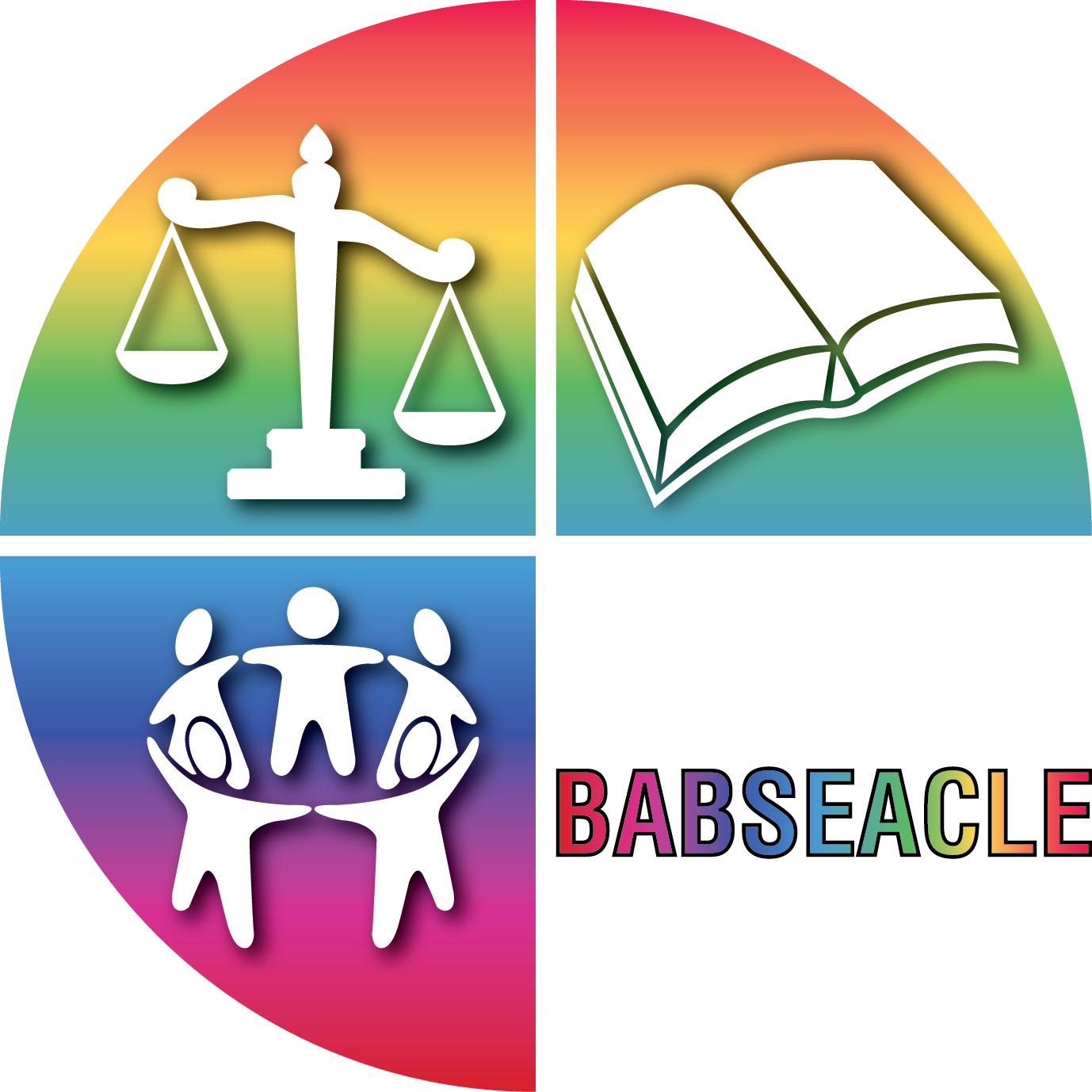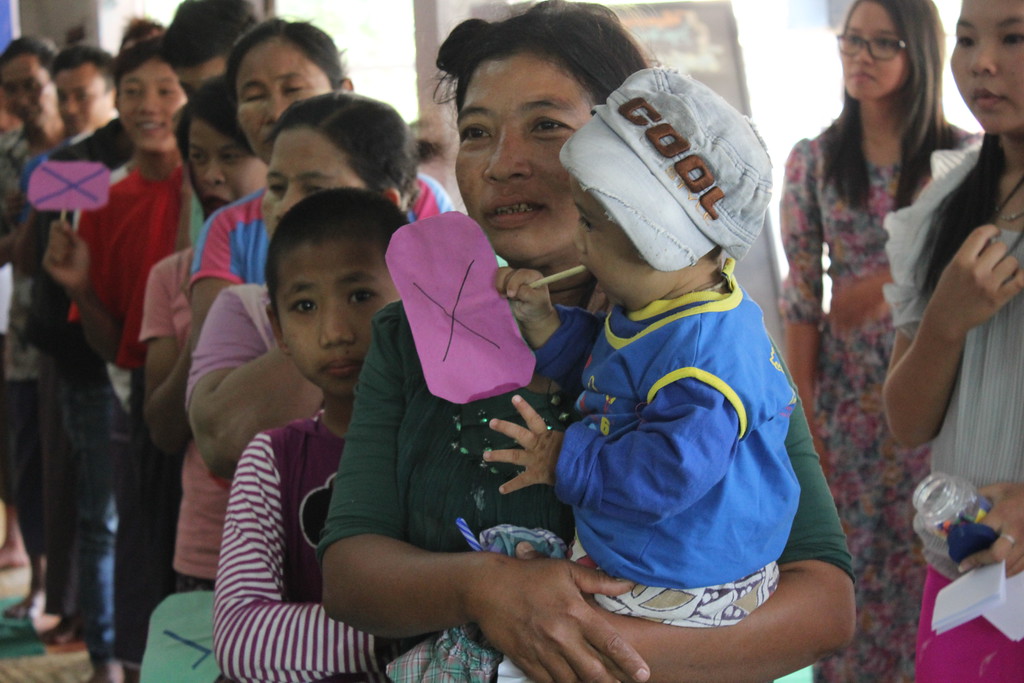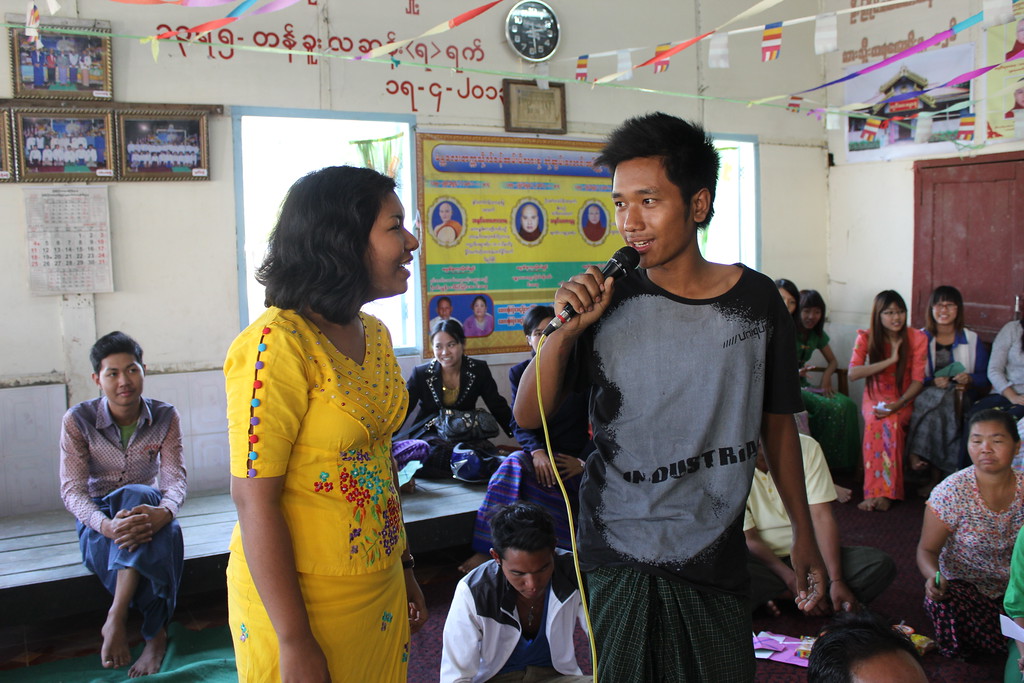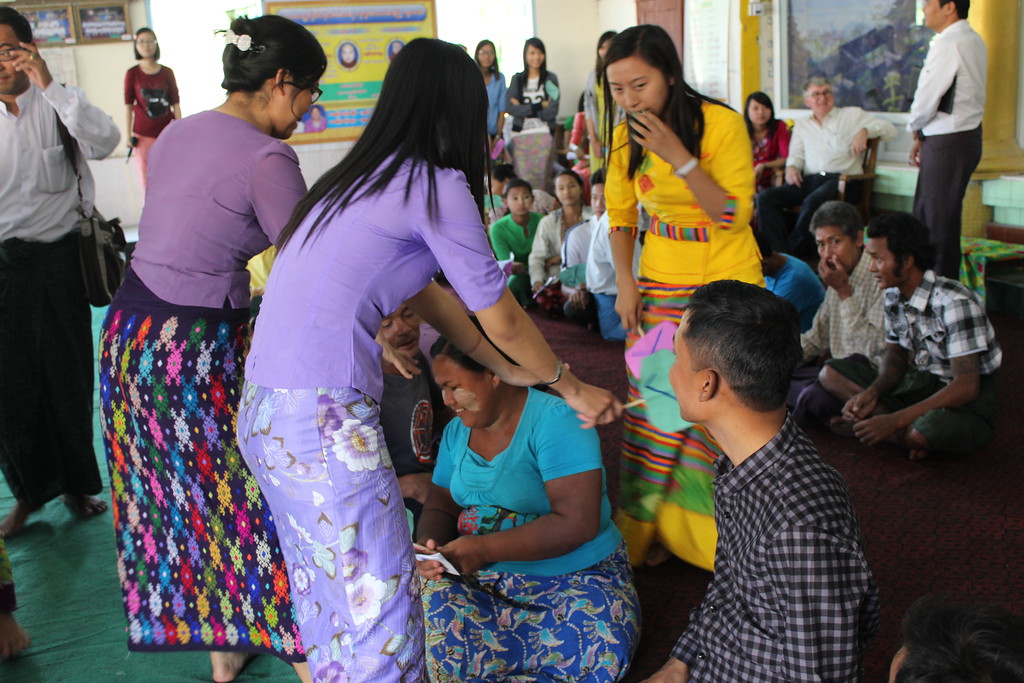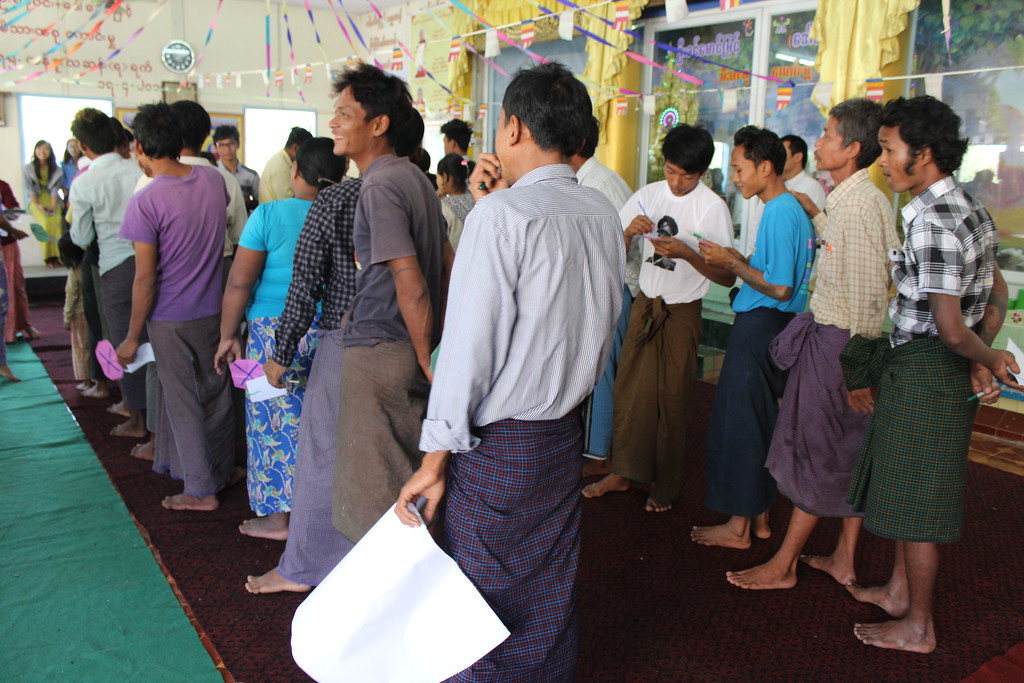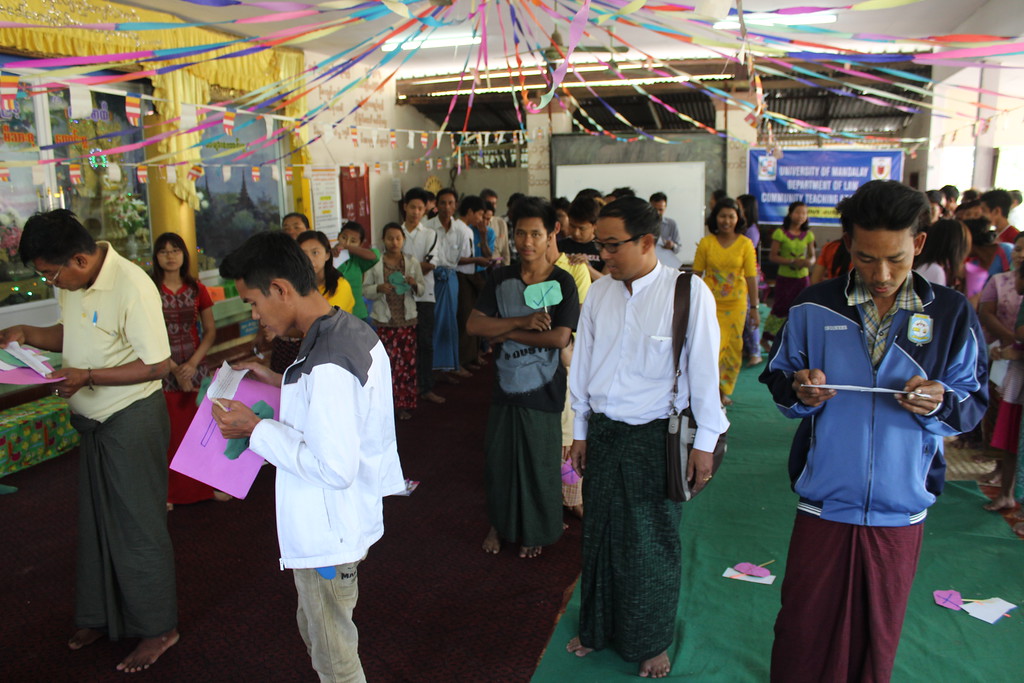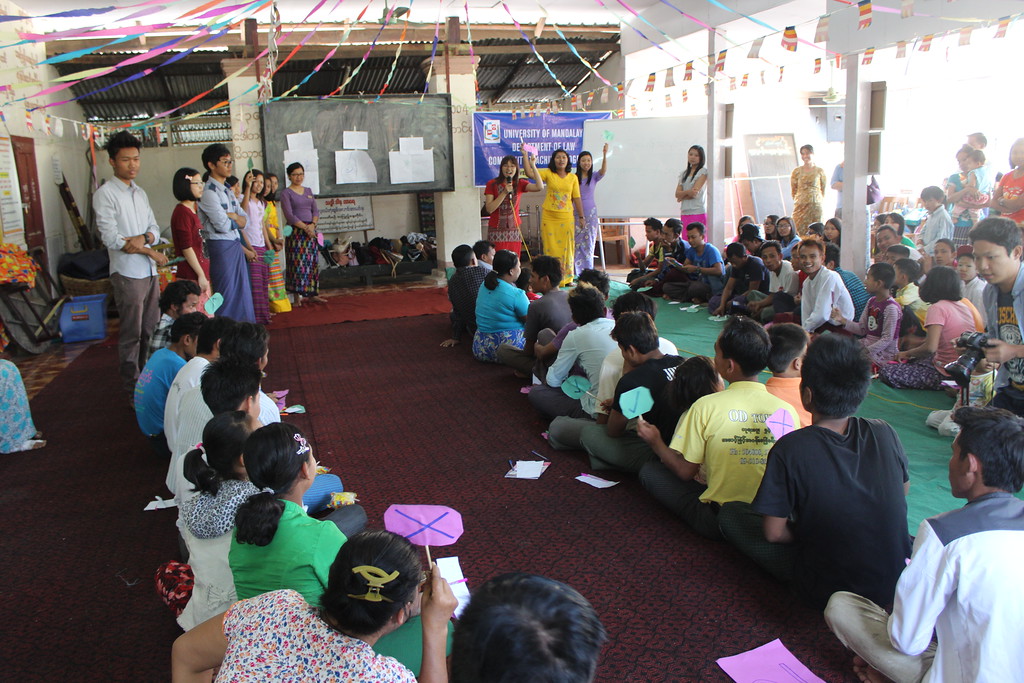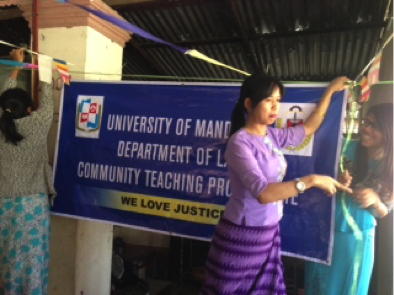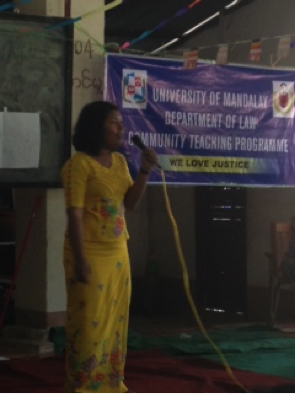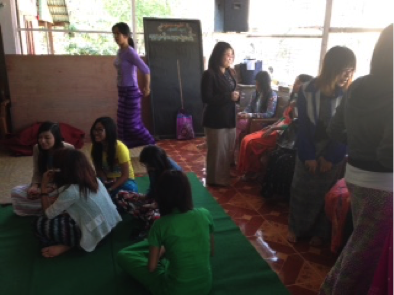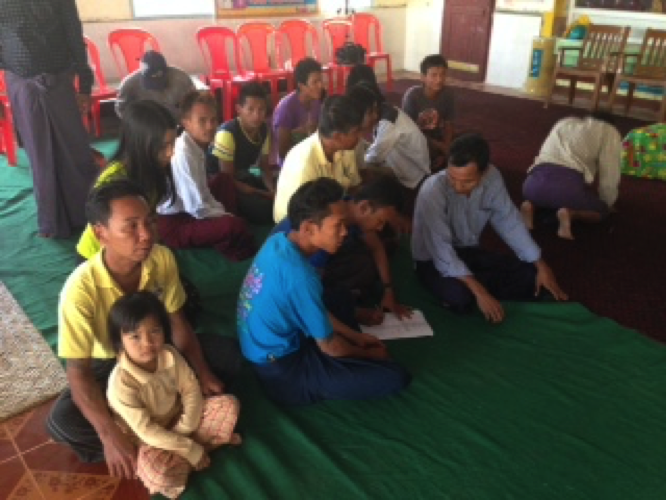In February 2015, I worked for a month, in Myanmar, as an International Clinician in Residence (ICIR), assisting the three local Mandalay universities (Mandalay University, Mandalay University of Distance Education, and Yadanabon University) with various aspects of clinical legal education. I am a Consultant, at DLA Piper, in Sydney, Australia office. My work arose from the relationship between the firm, New Perimeter (the firm’s global pro bono initiative), and BABSEACLE.
In the first week, I helped with the training of teams for the first National CLE Mock Trial Event, in Yangon. My next focus was at Mandalay University, which has a two-year-old undergraduate law program, with approximately forty second-year-students and twenty first-year-students. Mandalay University was preparing the presentation of, what I believe to be, the first, and (certainly the most recent) community legal training (CLT) presentation, in Myanmar.
CLT serves many purposes, and achieves many objectives:
- For the students, it assists in training of particular subjects, presentation skills, and gives them confidence.
- For the teachers, it helps in learning various clinical methods for the delivery of legal education and in working with their students.
- For the community, it delivers much needed knowledge about legal rights, and how to assert those rights, and about skills training and how to identify and reinforce the basic values which underpin those skills.
The CLT event was led and driven by Mandalay University lecturer U Tin Moe Lwin who was ably assisted by his professional colleagues and keen students. The teachers prepared the CLT program and commenced the training of the second-year-students. Very soon, the students themselves added their thoughts, knowledge and imagination to the activity. The final product was very much the outcome of mutual input from teachers and students alike.
Consistent with the clinical training objectives of BABSEACLE, the program was also very interactive and designed to include the community audience. The activities were:
- Games and rewards.
- Role plays – four different work injury scenarios.
- Q&As.
- Discussion groups.
- Feedback.
Many rehearsals were conducted. I was honoured to be invited to the final rehearsal and to give my feedback about it. It was an absolute delight to work with the teachers and the students.
The community selected, for the delivery of the CLT program, was made up of people who worked at the university site, including labourers on building sites and cleaners within the university framework. The topic selected for the training was “The Right to Compensation for Persons Injured at Work”, which (focused on Section 3 of the Myanmar Workman’s Compensation Act).
On the afternoon of Tuesday, 10 February, 2015, the crew assembled, at the Mandalay University Department of Law, at and travelled the short distance to the workers’ village. By this time, it had been confirmed that approval was given for me to attend the activity.
| Setting up |
As the students and the teachers set up the room, the local community fired up the generator, to ensure that the microphone system was in working order. Approximately 40 community members were present, for the start, the audience peaked at about 70 people. The students were brilliant, and the community members were inspirational.
|
|
|
Dang, from BABSEACLE, filmed this first community legal training event, and arranged for a number of interviews, afterwards, with community leaders, teachers and students.
|
I was honoured to be part of this ground breaking and unique event. It was remarkably successful, particularly for a first attempt at CLT. The Mandalay University teachers and students have shown great leadership, in introducing this important activity (community legal training) to the life of Myanmar.
|
By Michael Gill, 16 March 2015
